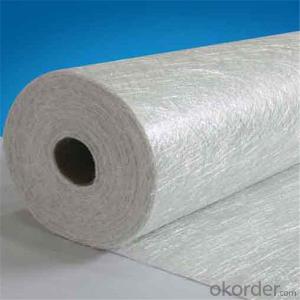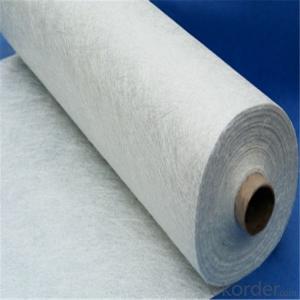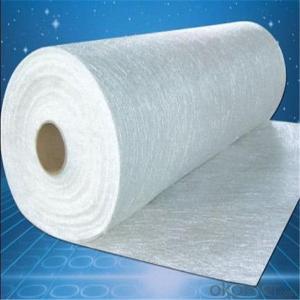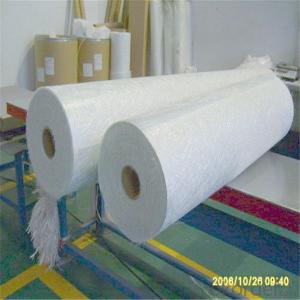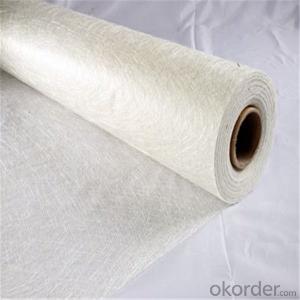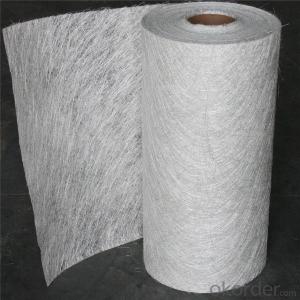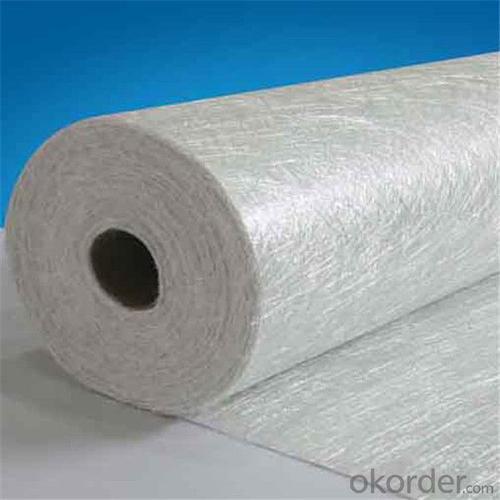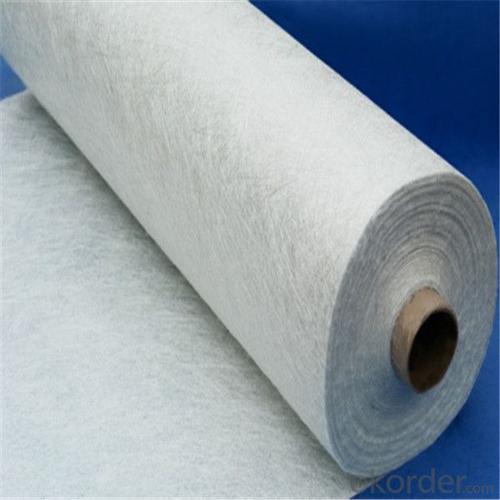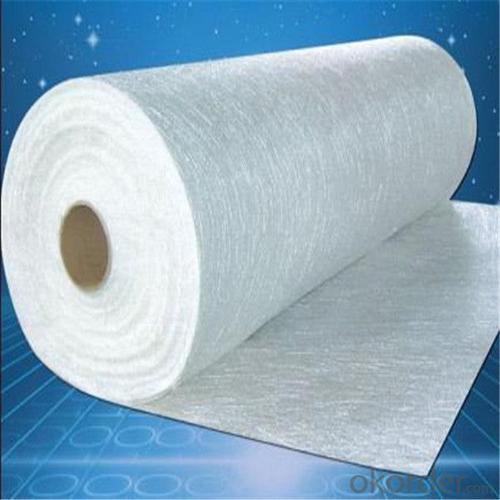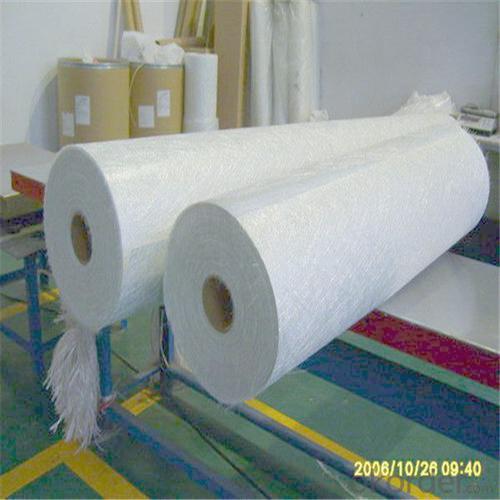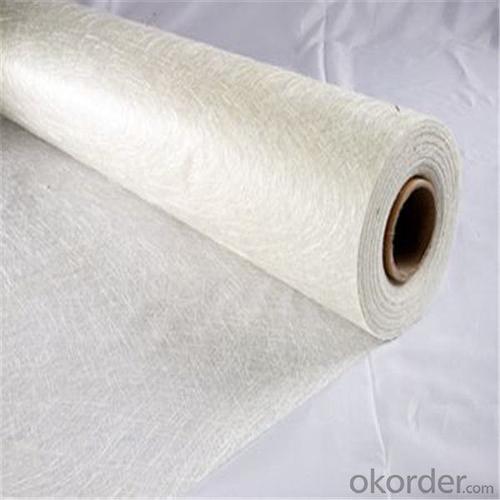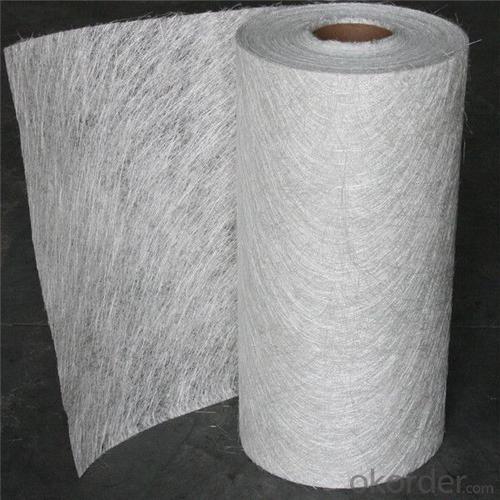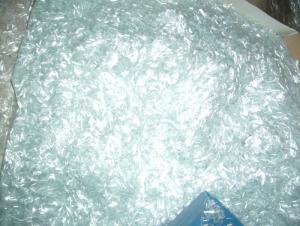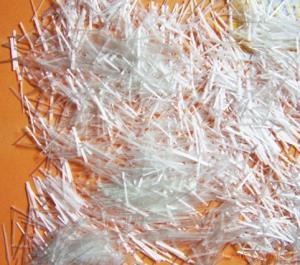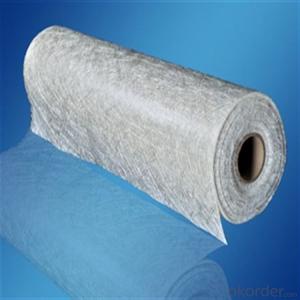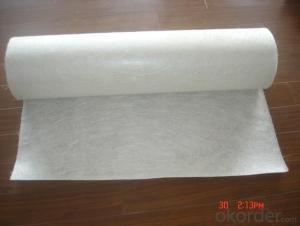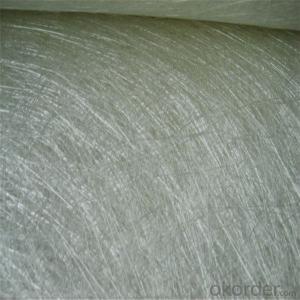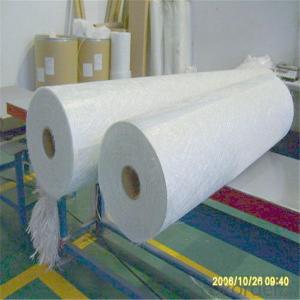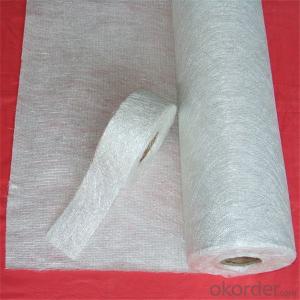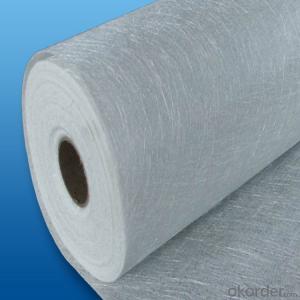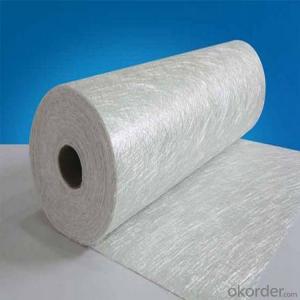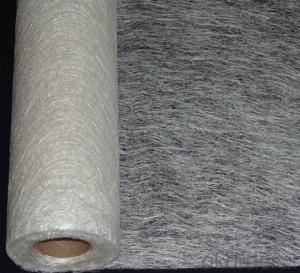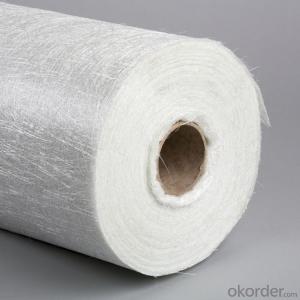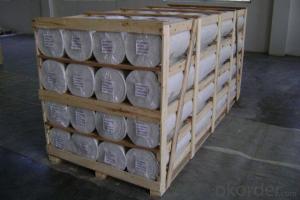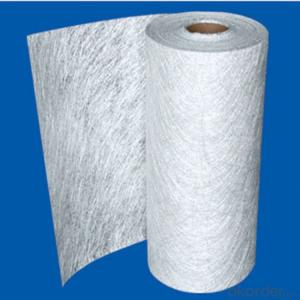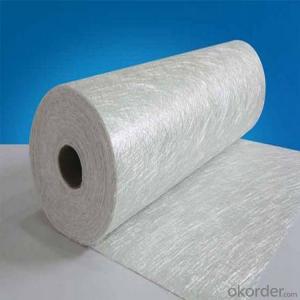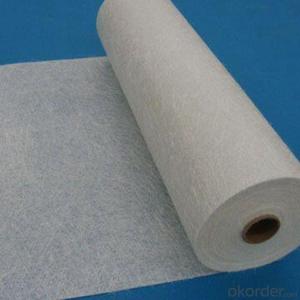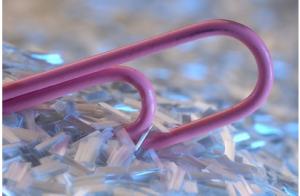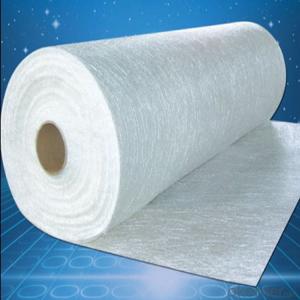Owens Corning Fiberglass Chopped Strand Mat - Roof Panel High Quality 300gsm
- Loading Port:
- Tianjin
- Payment Terms:
- TT OR LC
- Min Order Qty:
- 100 m.t.
- Supply Capability:
- 10000 m.t./month
OKorder Service Pledge
OKorder Financial Service
You Might Also Like
Quick Details
| Technique: | Chopped Strand Fiberglass Mat (CSM) | Dimensions: | 80g - 900g | Mat Type: | Continuous Filament Mat |
| Fiberglass Type: | E-Glass | Softness: | soft, very soft | Place of Origin: | Shandong, China (Mainland) |
| Brand Name: | cnbm | Model Number: | CSM | material: | fiberglass |
| Glass type: | E glass / C glass | Bond type: | powder or emulsion | Roll width: | 200 - 2600mm |
| Roll weight: | 28 - 55kgs | Density: | 225g/m2, 300g/m2, 450g/m2 | Certification: | ISO, CE |
Packaging & Delivery
| Packaging Details: | standand export packing . or packed as customer's need |
| Delivery Detail: | 10-20days after the contract is effective |
Specifications
Fiberglass Chopped Strand Mat
1.good combination fo resin
2.easy operation
3.good wet strength retention
Specification:
Fiberglass Chopped Strand Mat is an non-woven E- or C-glass fiberglass fabric manufactured by spreading continuous filament rovings of 50mm in length randomly and uniformly in combination with polyester binder in power form (or other binder in emulsion form). Powder or Emulsion fiberglass fiber chopped glass mat
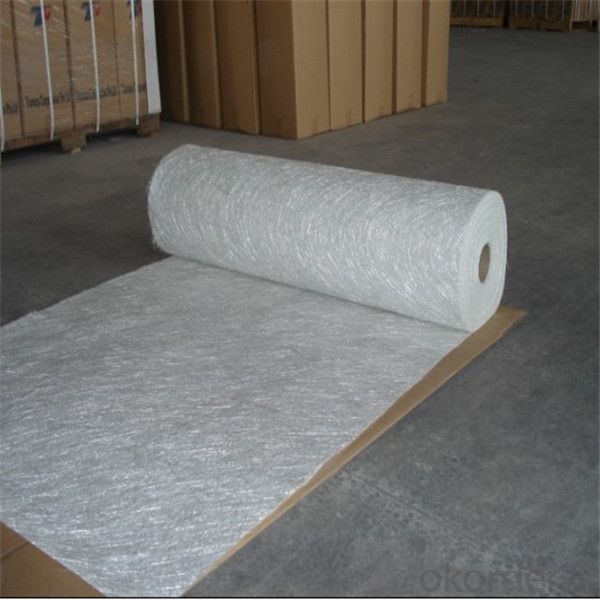
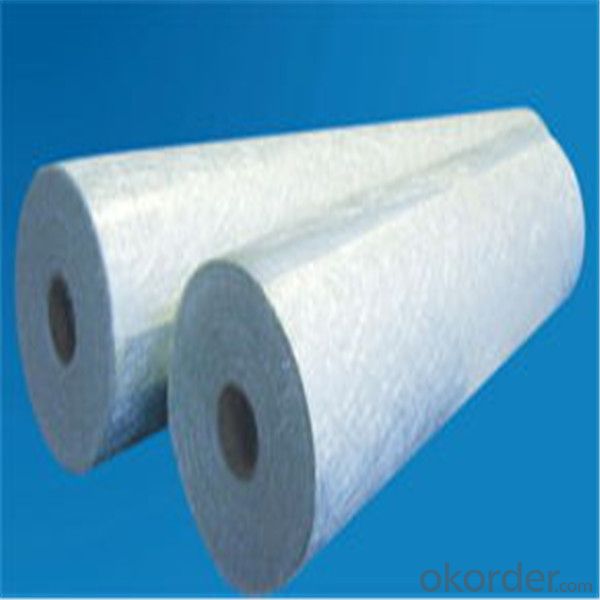
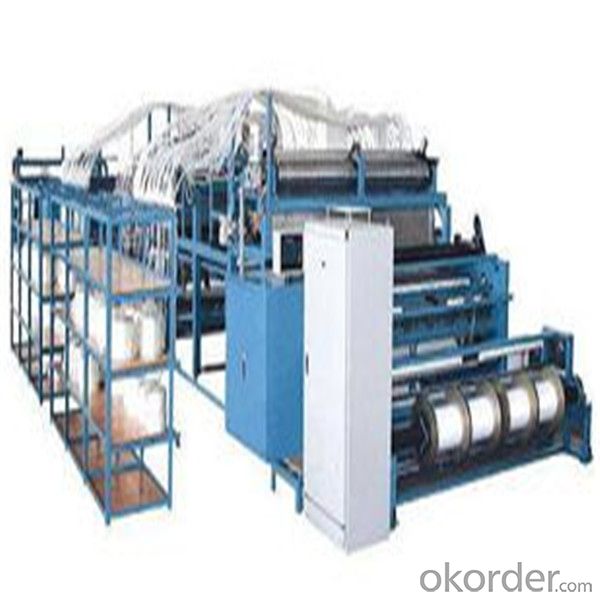
- Q: What is the impact resistance of fiberglass chopped strand?
- The impact resistance of fiberglass chopped strand is generally high, due to the inherent strength and durability of fiberglass material. It is known to withstand a wide range of impacts and provide resistance against cracking or breaking.
- Q: What are the different forms of fiberglass chopped strand available?
- There are several different forms of fiberglass chopped strand available, including continuous strand mat, chopped strand mat, woven roving, and chopped strand.
- Q: Is fiberglass chopped strand compatible with different coating methods?
- Indeed, different coating methods are compatible with fiberglass chopped strand. This reinforcement material is frequently employed in a range of coating processes, including, but not limited to, resin infusion, pultrusion, hand lay-up, and spray-up. Typically, the chopped strands are combined with a liquid resin to create a composite material that can be applied to a surface through the chosen coating method. The versatility of fiberglass chopped strand, thanks to its compatibility with different coating methods, makes it an invaluable asset to industries such as automotive, construction, aerospace, and marine.
- Q: What are the acoustic properties of fiberglass chopped strand?
- Fiberglass chopped strand is widely used in various applications due to its numerous acoustic properties. Firstly, its fibrous structure enables excellent sound absorption capabilities. The random orientation of the chopped strands creates spaces and voids that effectively trap and dissipate sound energy, thereby reducing echo and reverberation in enclosed spaces. Moreover, fiberglass chopped strand is a lightweight material with good sound insulation properties, thanks to its low density. It effectively blocks and reduces the transmission of sound waves, making it suitable for applications that require noise control, such as building construction or automotive interiors. Furthermore, the high tensile strength and durability of fiberglass chopped strand contribute to its acoustic performance. Its strong and resilient nature allows it to maintain its sound-absorbing and insulating properties even in demanding environments. Another advantage of fiberglass chopped strand is its versatility in terms of customization. It can be manufactured in varying thicknesses and densities to meet specific acoustic requirements. This flexibility allows it to be tailored for different applications, such as soundproofing panels, acoustic ceiling tiles, or speaker enclosures. Lastly, fiberglass chopped strand is non-combustible and resistant to moisture, mold, and mildew. These properties make it suitable for use in areas where fire safety and moisture resistance are critical, such as theaters, recording studios, or industrial settings. Overall, fiberglass chopped strand's acoustic properties, including sound absorption, insulation, strength, customization options, and resistance to fire and moisture, make it a favored material for a wide range of applications where sound control and quality are important.
- Q: How does fiberglass chopped strand reinforce composite materials?
- Fiberglass chopped strand is commonly used as a reinforcing material in composite materials due to its high strength and durability. When added to a composite matrix, such as epoxy or polyester resin, the chopped strand acts as a reinforcement, distributing and transferring stress throughout the composite structure. The fibers in fiberglass chopped strand are oriented randomly, which provides multidirectional reinforcement to the composite material. This means that the composite gains strength in all directions, making it highly resistant to tensile, compressive, and shear forces. The high tensile strength of fiberglass chopped strand allows it to withstand heavy loads and prevent the composite material from breaking or fracturing under stress. Additionally, the fibers also improve the impact resistance of the composite, making it more resistant to damage caused by sudden impacts or vibrations. Furthermore, the durability of fiberglass chopped strand makes it an ideal choice for reinforcing composite materials. It is highly resistant to corrosion, chemicals, and UV radiation, ensuring that the composite material remains stable and intact over time. This durability also contributes to the longevity and reliability of the composite structure. In summary, fiberglass chopped strand reinforces composite materials by providing multidirectional reinforcement, enhancing tensile strength, improving impact resistance, and ensuring long-term durability. Its addition to the composite matrix significantly enhances the overall mechanical properties and performance of the composite material, making it suitable for a wide range of applications in various industries.
- Q: Can fiberglass chopped strand be used in the production of insulation panels?
- Yes, fiberglass chopped strand can be used in the production of insulation panels. Fiberglass chopped strand is commonly used as a reinforcement material in various composite applications, including insulation panels. It provides strength, durability, and thermal insulation properties to the panels. The chopped strands are mixed with a binder material and then formed into panels using various manufacturing techniques such as compression molding or pultrusion. The resulting insulation panels offer excellent thermal insulation properties, low thermal conductivity, and high resistance to heat transfer, making them suitable for a wide range of applications in the construction and industrial sectors.
- Q: Can fiberglass chopped strand be used in chemical process equipment?
- No, fiberglass chopped strand is not suitable for use in chemical process equipment as it is not chemically resistant and may react with the chemicals being processed, leading to potential damage and failure of the equipment.
- Q: Can fiberglass chopped strand be used for reinforcing ceramic matrix composites?
- Fiberglass chopped strand is not suitable for reinforcing ceramic matrix composites. These composites need materials that can withstand high temperatures and offer exceptional mechanical properties in elevated temperatures. However, fiberglass may lack the required thermal stability to endure the extreme temperatures necessary for ceramic matrix composites. Moreover, the thermal expansion coefficients of fiberglass and ceramics often differ significantly, resulting in poor compatibility and potential composite failure. Consequently, alternative fibers such as carbon fibers or silicon carbide fibers, which are known for their high-temperature resistance, are commonly employed for reinforcing ceramic matrix composites.
- Q: How is the tensile strength of fiberglass chopped strand determined?
- The tensile strength of fiberglass chopped strand is determined through a standardized testing method known as ASTM D2343-17. This test involves taking a sample of the fiberglass chopped strand and subjecting it to a controlled pulling force until it breaks. The force required to break the sample is then measured, and this value is used to determine the tensile strength of the fiberglass chopped strand. During the testing process, the fiberglass chopped strand is typically held in a specially designed grip system, which ensures a secure and uniform distribution of the pulling force. The grip system is attached to a universal testing machine, which has the capability to apply a steadily increasing force to the sample. The test is carried out in a controlled laboratory environment, with specific parameters such as temperature and humidity being maintained to ensure accurate and reliable results. Several samples are usually tested to ensure statistical significance. Once the test is complete, the maximum force required to break the sample is recorded. This value is then divided by the cross-sectional area of the sample to calculate the tensile strength of the fiberglass chopped strand. The tensile strength is typically reported in units of force per unit area, such as pounds per square inch (psi) or megapascals (MPa). By determining the tensile strength of fiberglass chopped strand, manufacturers and end-users can assess its suitability for various applications that require high tensile strength properties, such as in the production of composite materials, construction, automotive, aerospace, and marine industries.
- Q: Can fiberglass chopped strand be used in the production of automotive parts?
- Automotive parts can be produced using fiberglass chopped strand. This reinforcement material is created by chopping fiberglass strands into smaller pieces. Its high strength-to-weight ratio, durability, and cost-effectiveness make it a popular choice in the manufacturing of automotive parts. In the automotive industry, fiberglass chopped strand is commonly utilized in the production of various components like body panels, bumpers, hoods, fenders, and interior parts. It is often combined with resin to form composite materials that possess excellent strength and stiffness properties. The length and orientation of the chopped strand can be tailored to meet specific design requirements, enabling a wide range of applications in automotive manufacturing. Moreover, fiberglass chopped strand provides several advantages for the production of automotive parts. Firstly, it is lightweight, which aids in reducing the overall vehicle weight and enhancing fuel efficiency. Furthermore, it boasts remarkable corrosion resistance, making it suitable for automotive applications that are exposed to harsh environments. Additionally, fiberglass chopped strand exhibits good dimensional stability and can withstand high temperatures, making it suitable for under-the-hood components. In conclusion, fiberglass chopped strand is a versatile and dependable material that can be effectively employed in the production of automotive parts. Its unique properties make it an excellent choice for manufacturers seeking to enhance the performance, durability, and cost-effectiveness of their automotive components.
Send your message to us
Owens Corning Fiberglass Chopped Strand Mat - Roof Panel High Quality 300gsm
- Loading Port:
- Tianjin
- Payment Terms:
- TT OR LC
- Min Order Qty:
- 100 m.t.
- Supply Capability:
- 10000 m.t./month
OKorder Service Pledge
OKorder Financial Service
Similar products
Hot products
Hot Searches
Related keywords
